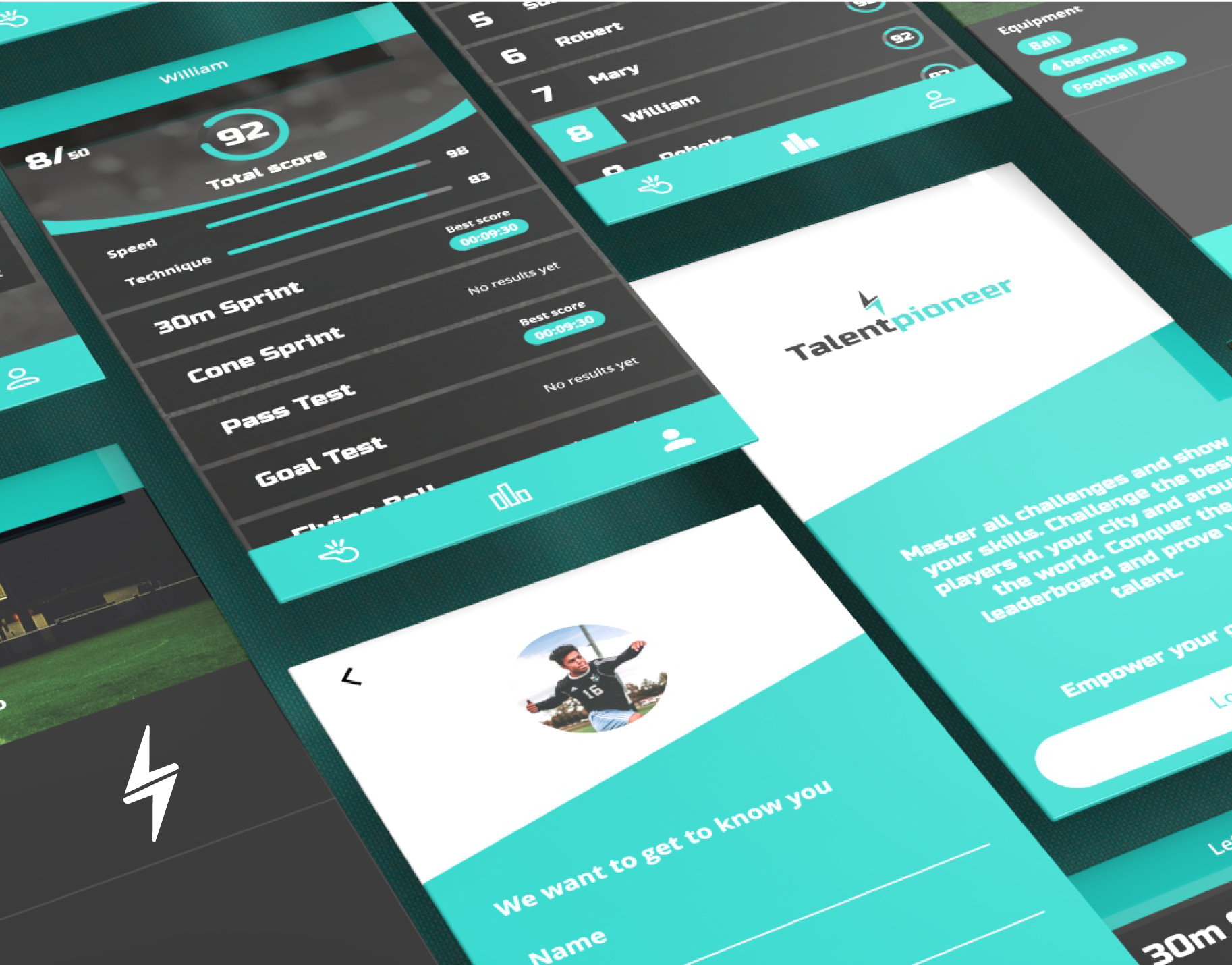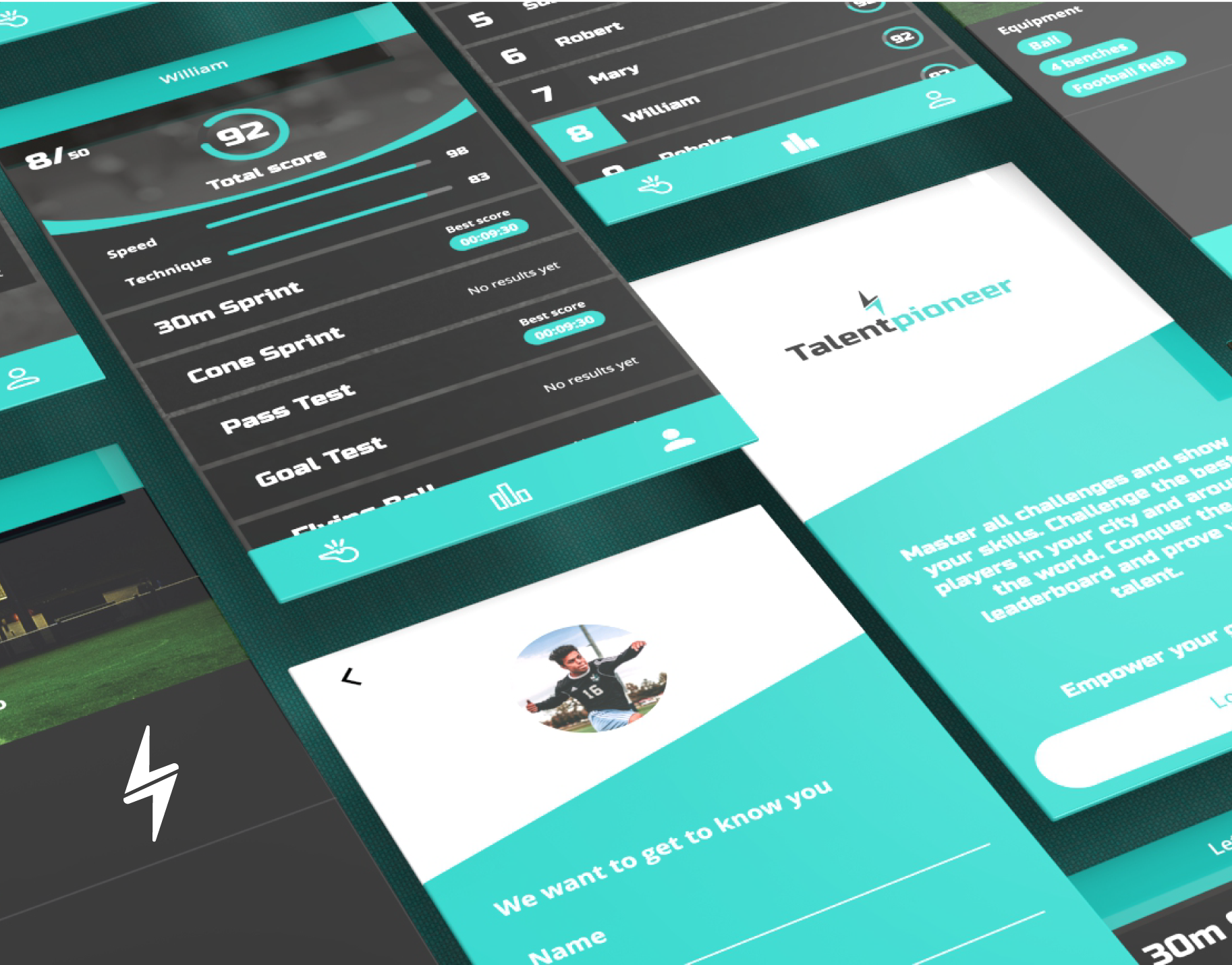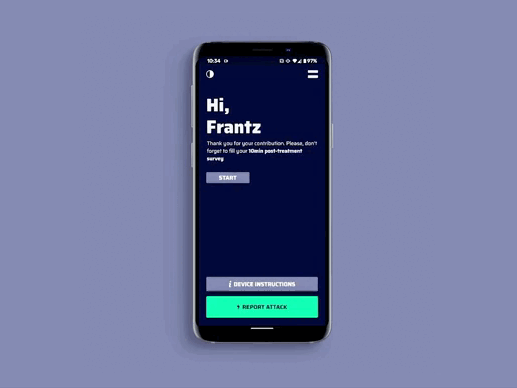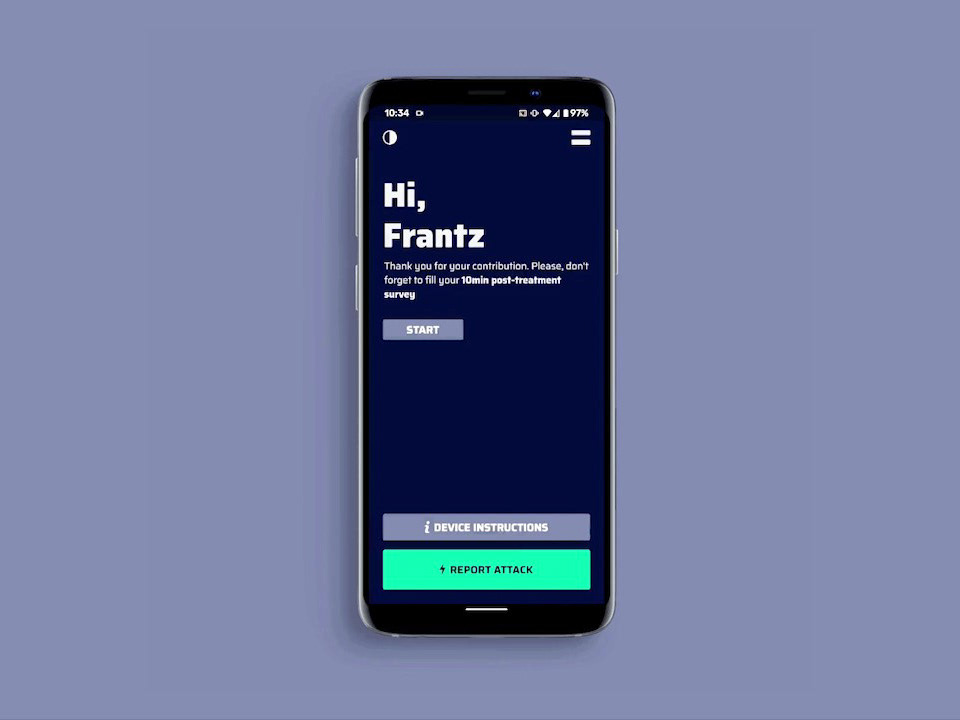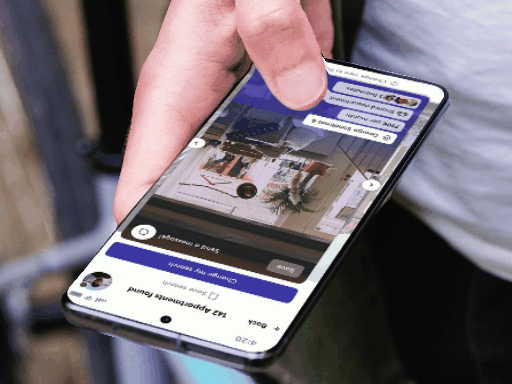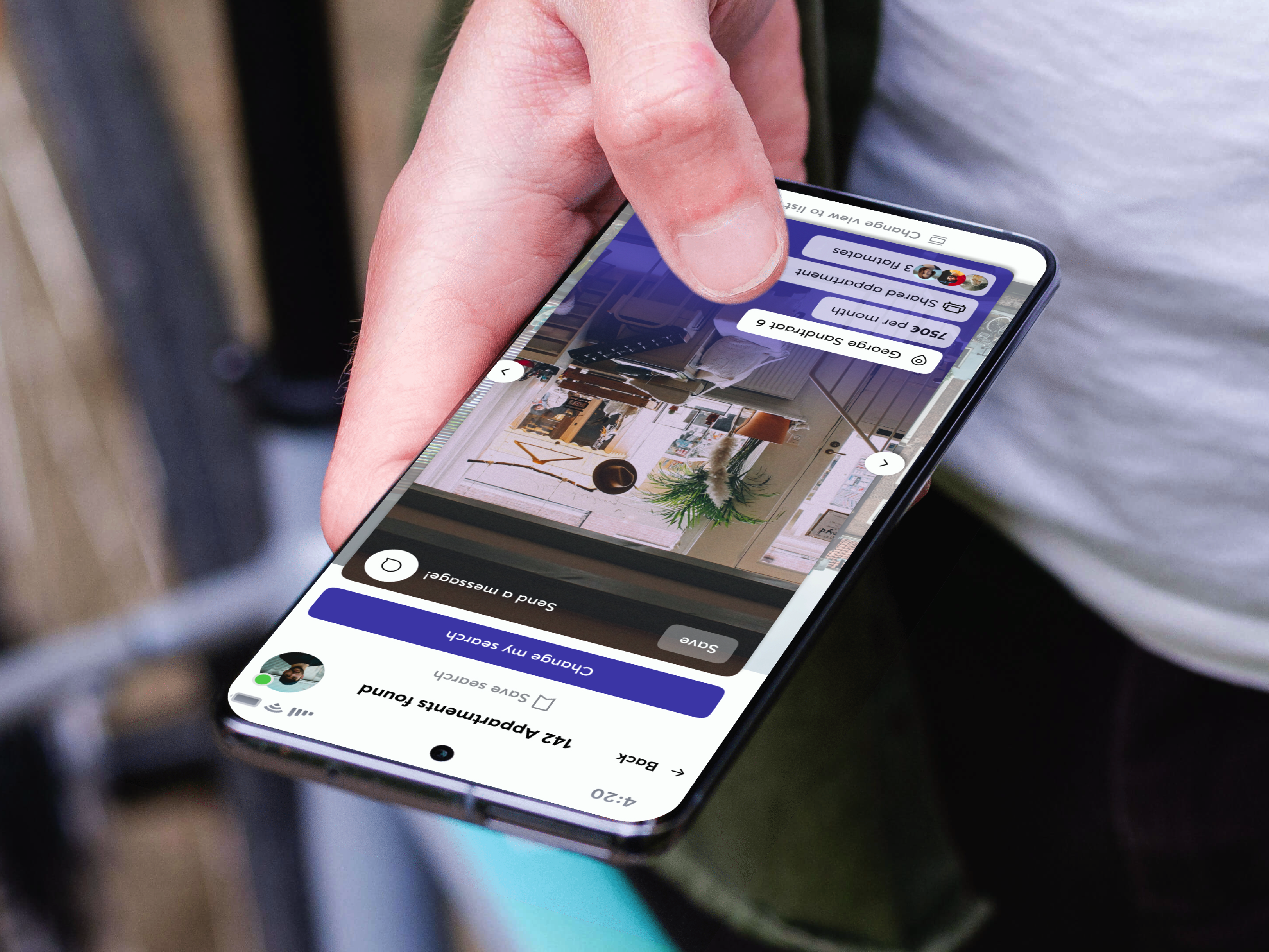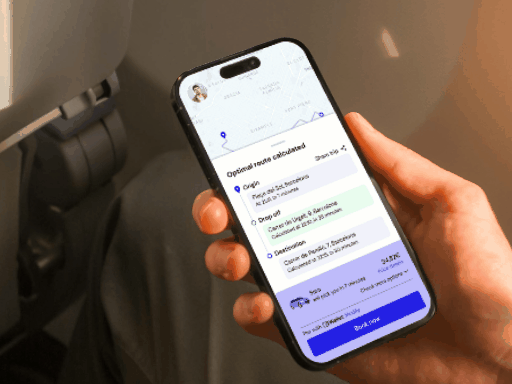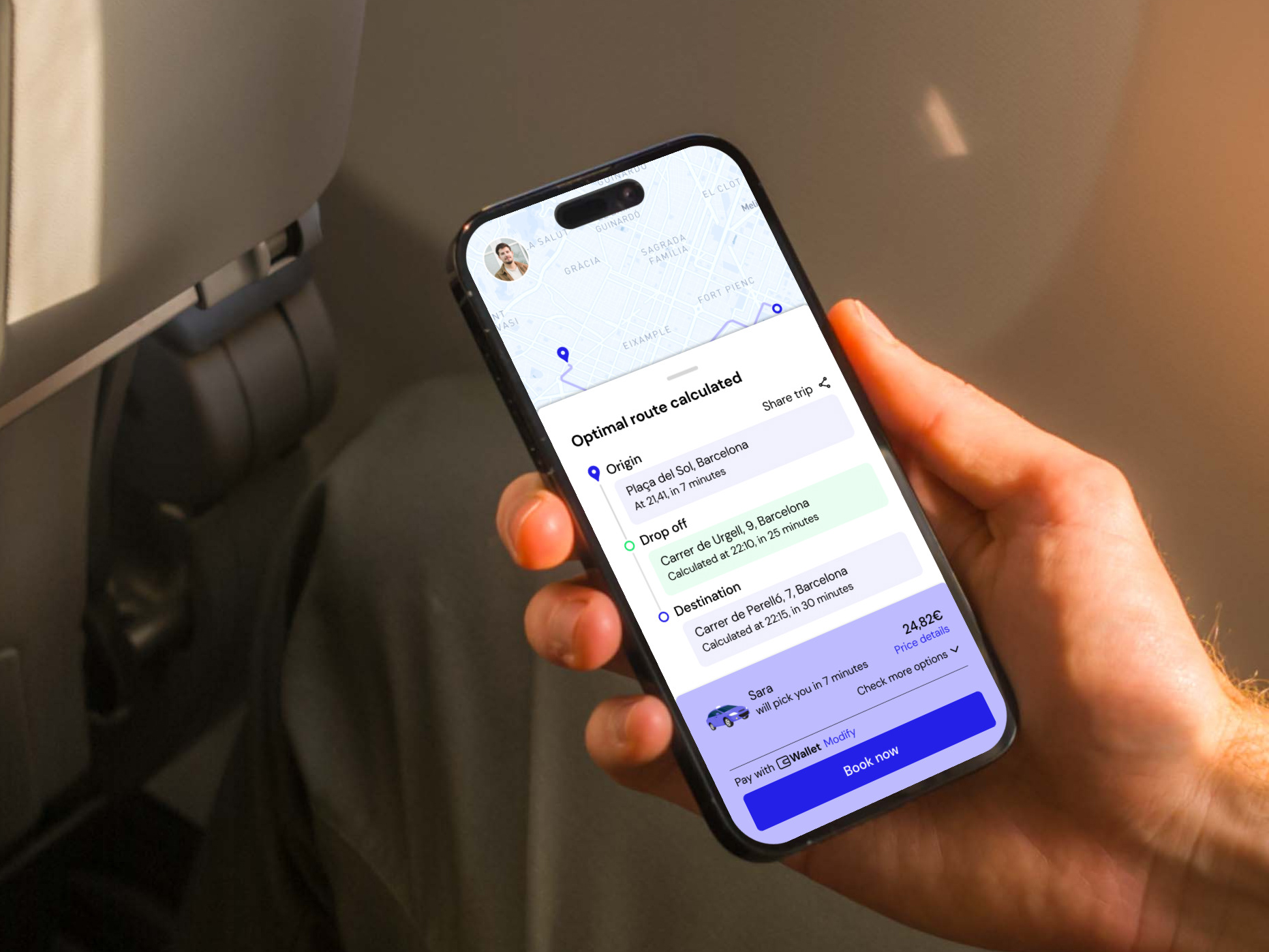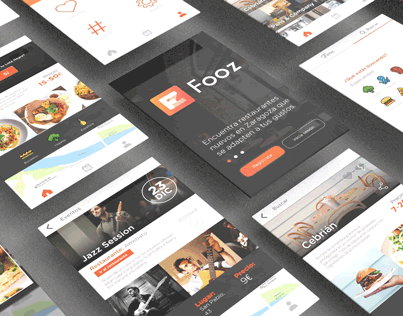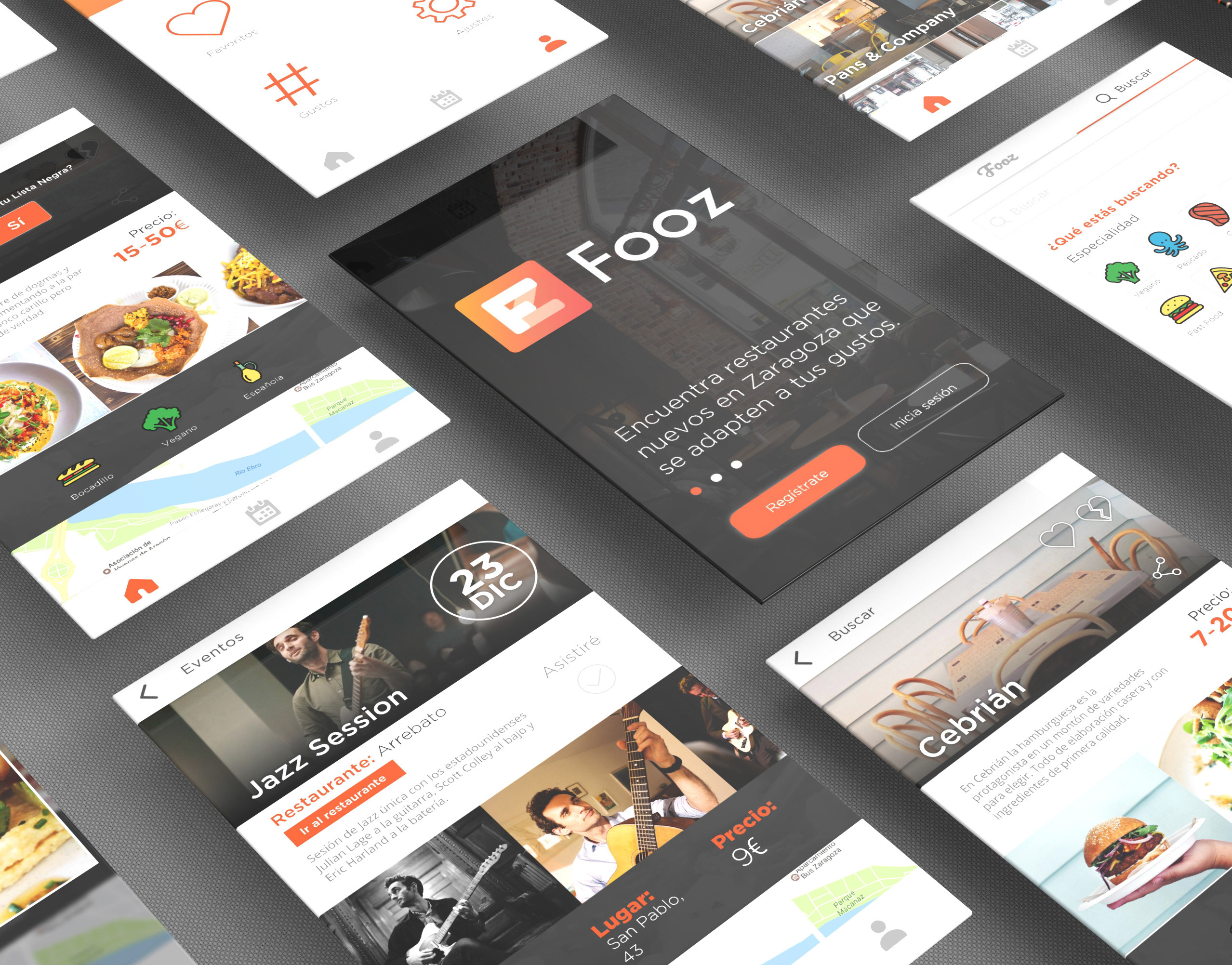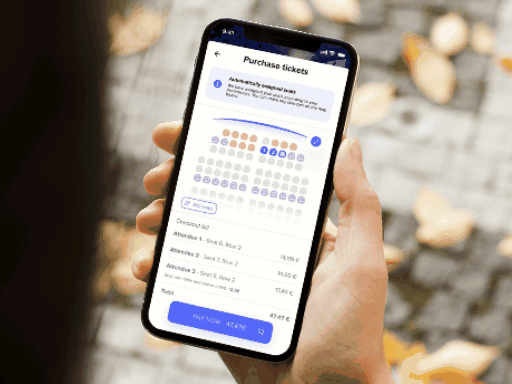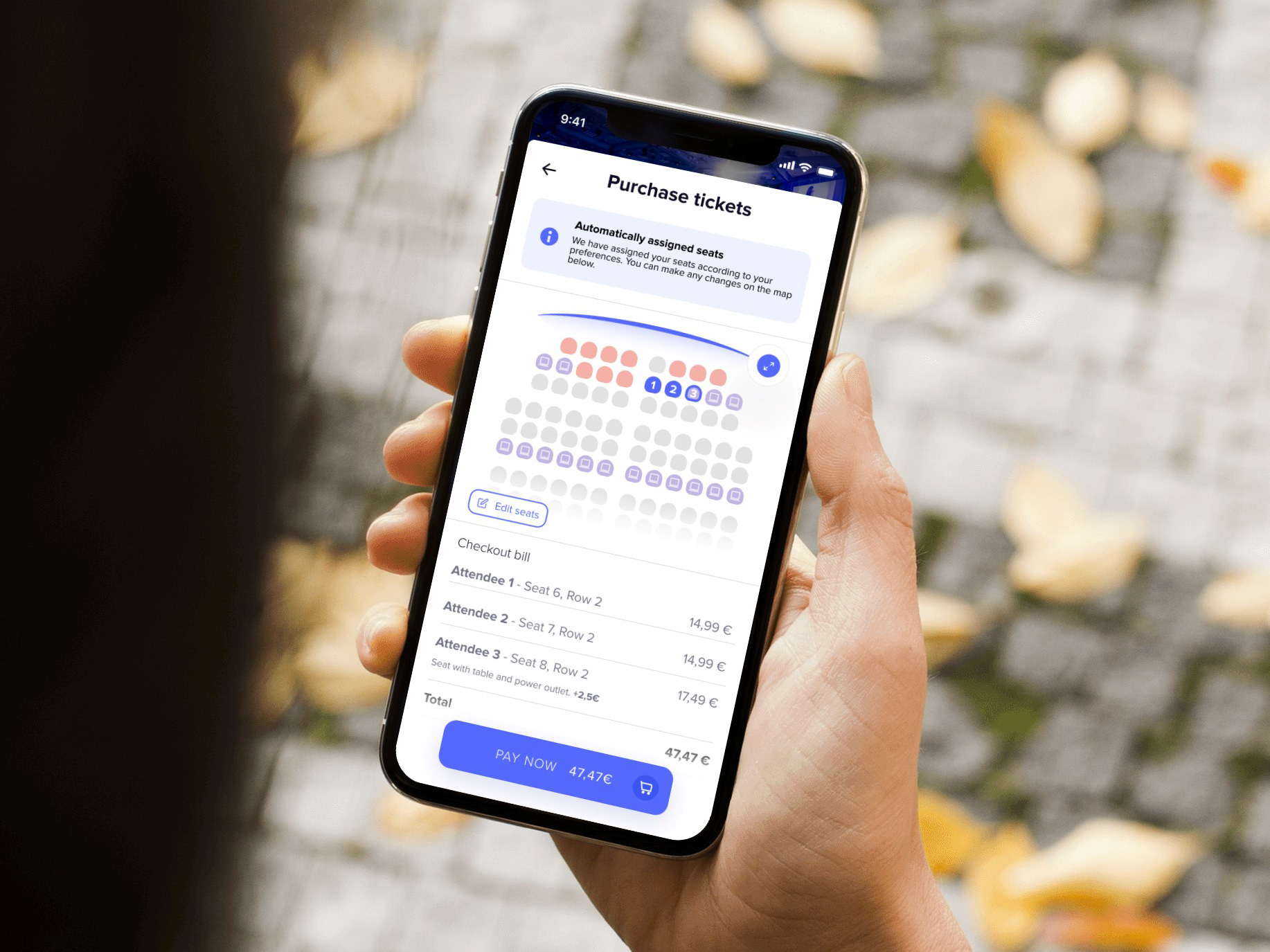Double diamond methodology
The initial research question was very broad, and due to this, I decided to use the double diamond methodology during the project. This methodology allowed me to start with an extensive research into the Smart-home environment that provided me with a subsequent direction to narrow down.
The initial research question was very broad, and due to this, I decided to use the double diamond methodology during the project. This methodology allowed me to start with an extensive research into the Smart-home environment that provided me with a subsequent direction to narrow down.
Market research
I approached the market research into several different directions like current Smart-home technology available in the market and statistics pointing towards future technology trends that would enable this market. It was observed how:
I approached the market research into several different directions like current Smart-home technology available in the market and statistics pointing towards future technology trends that would enable this market. It was observed how:
Smart-Home products will gather and integrate different functionalities into individual devices, avoiding isolated functions. That’s why Smart home will focus on satisfying more complex customer needs instead of offering individual technical features.
Smart appliances are expected to replace traditional devices within the regular replacement cycle. This means that we are moving into a smart home environment with a high number of sensors that will collect behavior user data.
Touch screen and voice controlled devices will increase its growth in the market. Voice control will be soon enabled by AI.
Literature review
Different literature review contributed in great dimension to define a first direction for the project, putting the focus on health, comfort and well-being.
Different literature review contributed in great dimension to define a first direction for the project, putting the focus on health, comfort and well-being.
Home user needs definition
To understand what services would be of interest to users of smart homes, it was necessary to define the needs currently being addressed in the home space. To do this, I divided the needs into 16 different categories based on a literature review of Maslow's hierarchy of needs. This exercise allowed for a deeper understanding of the project and helped inform the development of future smart home services.
To understand what services would be of interest to users of smart homes, it was necessary to define the needs currently being addressed in the home space. To do this, I divided the needs into 16 different categories based on a literature review of Maslow's hierarchy of needs. This exercise allowed for a deeper understanding of the project and helped inform the development of future smart home services.
User surveys
To answer this question, I arranged a survey to gain insight on the services that users of smart homes were interested in. The survey was designed to cover a wide range of ages and demographics. During the survey, it was observed that privacy and control were major concerns for users.
To answer this question, I arranged a survey to gain insight on the services that users of smart homes were interested in. The survey was designed to cover a wide range of ages and demographics. During the survey, it was observed that privacy and control were major concerns for users.
Personas & scenarios
A series of different personas representing stereotypical members of the Swedish family and various home moodboard scenarios were created to empathize with smart home users and serve as a tool during the next steps of the project. These personas and scenarios played a key role in the first ideation, context situations, and focus groups. They were based on literature review and information gathered from the surveys.
A series of different personas representing stereotypical members of the Swedish family and various home moodboard scenarios were created to empathize with smart home users and serve as a tool during the next steps of the project. These personas and scenarios played a key role in the first ideation, context situations, and focus groups. They were based on literature review and information gathered from the surveys.
Early ideation
The ideation was conducted in a small committee with my coworkers at the Block Zero office. The approach we followed was to generate ideas by connecting three blocks: family members, scenarios, and needs to be covered. Because of the large number of possible combinations, we focused on the topics that received the most emphasis during the surveys. It was observed that most of the ideas generated were part of larger, more complex services, and most of them were connected under the theme of health, comfort, and well-being. This helped us prioritize which ideas to pursue further in the development phase of the project.
The ideation was conducted in a small committee with my coworkers at the Block Zero office. The approach we followed was to generate ideas by connecting three blocks: family members, scenarios, and needs to be covered. Because of the large number of possible combinations, we focused on the topics that received the most emphasis during the surveys. It was observed that most of the ideas generated were part of larger, more complex services, and most of them were connected under the theme of health, comfort, and well-being. This helped us prioritize which ideas to pursue further in the development phase of the project.
Context situation & output chart
Using all of the previous knowledge and the results of the ideation session and surveys, I created a comprehensive list of daily family situations and the corresponding outcomes or services that could be triggered by a smart home system. This list also includes the sensor involved, the home segment it relates to, and the potential outcome through the user interface.
Using all of the previous knowledge and the results of the ideation session and surveys, I created a comprehensive list of daily family situations and the corresponding outcomes or services that could be triggered by a smart home system. This list also includes the sensor involved, the home segment it relates to, and the potential outcome through the user interface.
This chart defines a series of potential services that a smart home system could offer.
Stakeholder map
At this stage of the project, I proposed a first direction for the service. The stakeholder map provided a first look at how family members share data and their connections and influences within the smart health system.
At this stage of the project, I proposed a first direction for the service. The stakeholder map provided a first look at how family members share data and their connections and influences within the smart health system.
User journey
The user journey helped to clarify the proposed smart home health service. The user journey is based on the personas created in earlier stages of the project.
The user journey helped to clarify the proposed smart home health service. The user journey is based on the personas created in earlier stages of the project.
At this point, it became clear that it was necessary to empathize with real users to validate the service and understand their views on the use and sharing of their data, as well as their concerns about the control they have over their information.
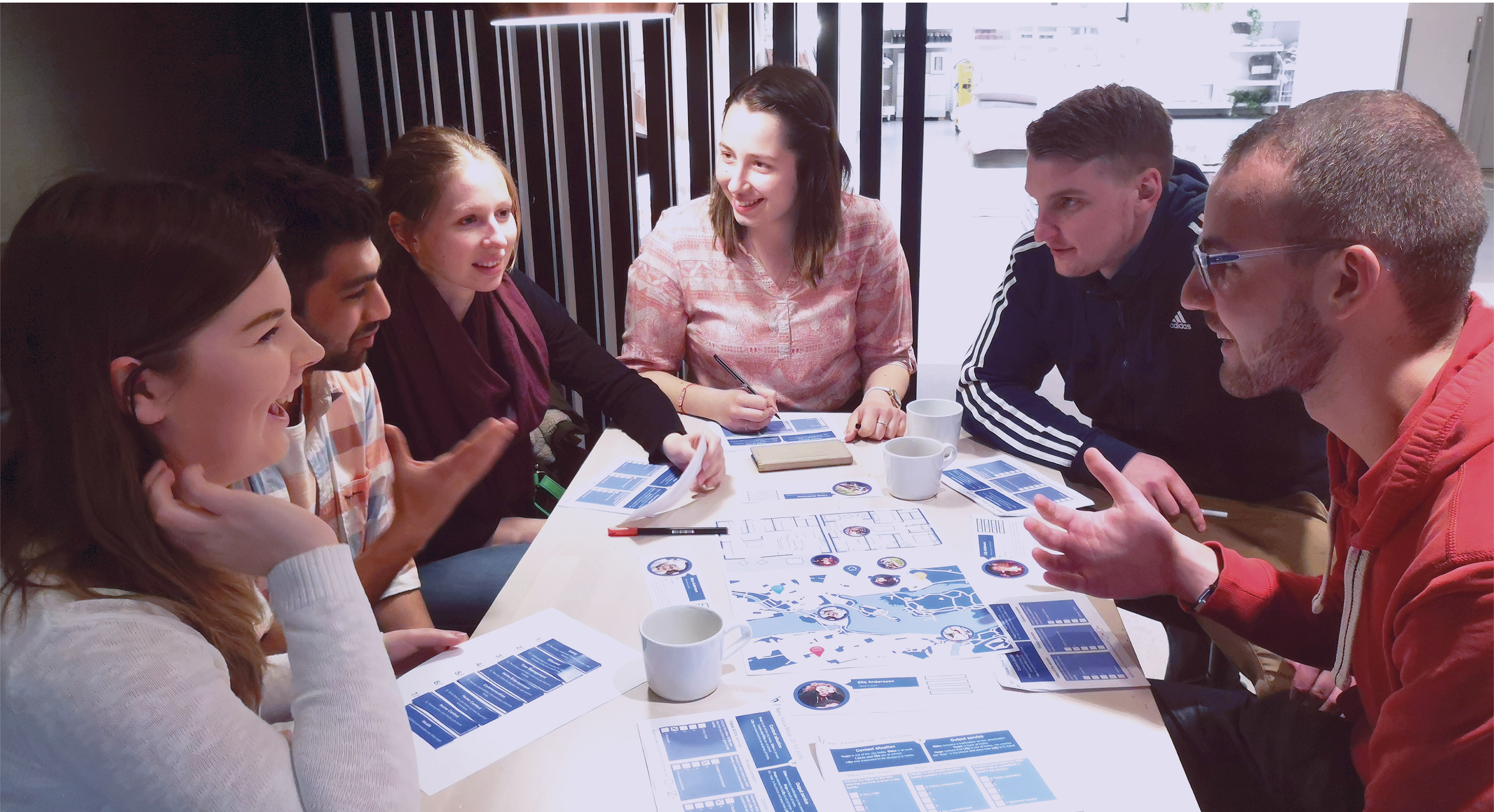
Focus group
The focus group was designed to gather insights on privacy and control concerns. To do this, I prepared an activity where participants could take on different personas and engage in an open conversation about their concerns regarding privacy and control on the previously defined context and output situations. This allowed me to better understand the perspectives of different users and gain a more comprehensive view of their concerns.
The focus group was designed to gather insights on privacy and control concerns. To do this, I prepared an activity where participants could take on different personas and engage in an open conversation about their concerns regarding privacy and control on the previously defined context and output situations. This allowed me to better understand the perspectives of different users and gain a more comprehensive view of their concerns.
Focus group conclusions
The focus group provided me with a clear understanding of how important and limiting privacy and control concerns are to users. Just because we can offer a service doesn't mean we should. It's necessary to consult with users and not compromise the privacy of one in favor of others.
The outcome of this exercise has determined that the services provided by the Smart Home system are:
Get vital information, get better, track your own health condition, manage your weight, get more active, awake motivation to go healthier, feel more rested, and make your home homier.
Get vital information, get better, track your own health condition, manage your weight, get more active, awake motivation to go healthier, feel more rested, and make your home homier.
How does it work?
The product includes a smart speaker and vital signs (heart rate, blood glucose, temperature, hydration, oxygen saturation, blood pressure and stress) finger scanner. It allows users to use voice command, and a touchscreen interface to interact with the services of a personal health assistant. This device constitutes the heart of a Health Monitoring System, while the service is provided together through other devices like smartphones and smartwatches.
The product includes a smart speaker and vital signs (heart rate, blood glucose, temperature, hydration, oxygen saturation, blood pressure and stress) finger scanner. It allows users to use voice command, and a touchscreen interface to interact with the services of a personal health assistant. This device constitutes the heart of a Health Monitoring System, while the service is provided together through other devices like smartphones and smartwatches.
Vital sign scanner, all in one
The market research showed that "Smart Home products will gather and integrate different functionalities into individual devices". Based on this insight, our product includes a vital sign scanner that not only complements the health service, but also reinforces its connection to the health theme. This makes it not only a hub, but the center of the Smart Home health system.
The market research showed that "Smart Home products will gather and integrate different functionalities into individual devices". Based on this insight, our product includes a vital sign scanner that not only complements the health service, but also reinforces its connection to the health theme. This makes it not only a hub, but the center of the Smart Home health system.
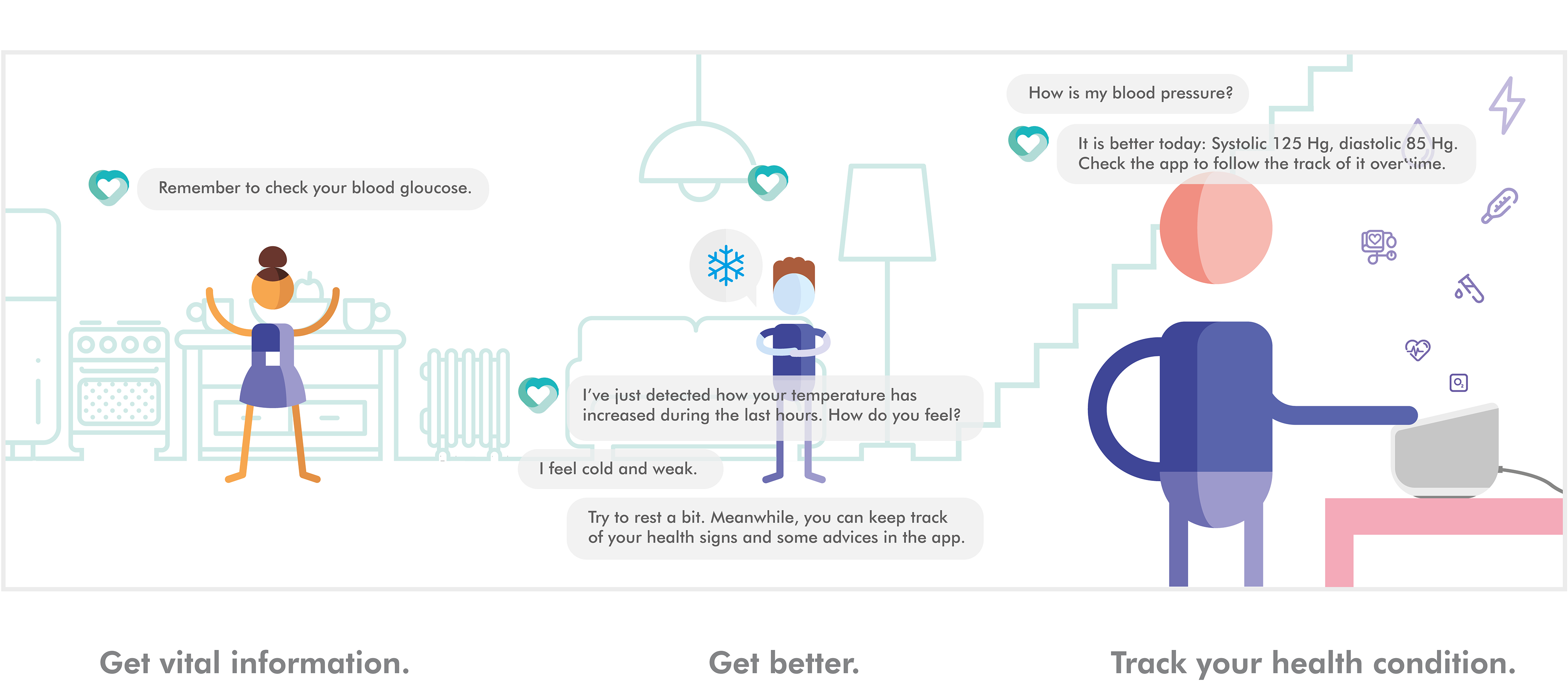
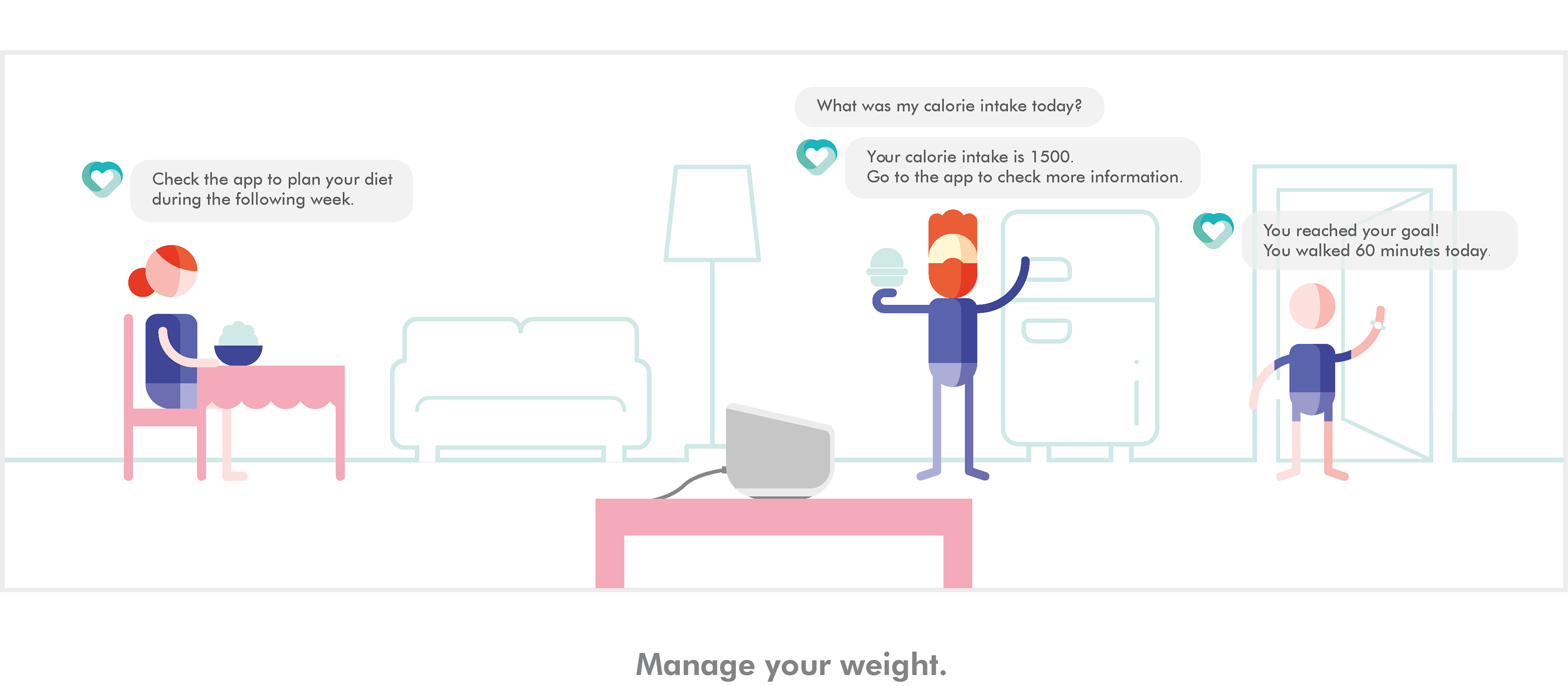
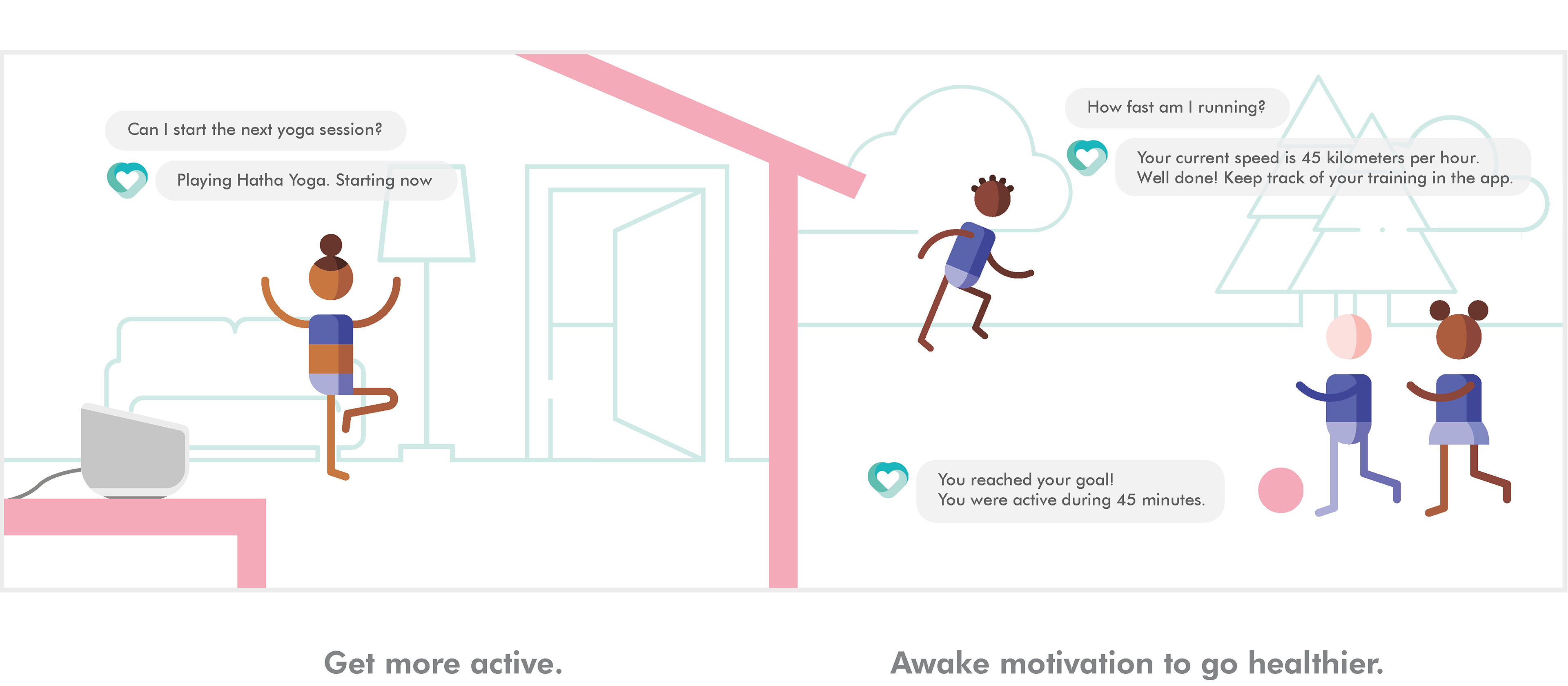
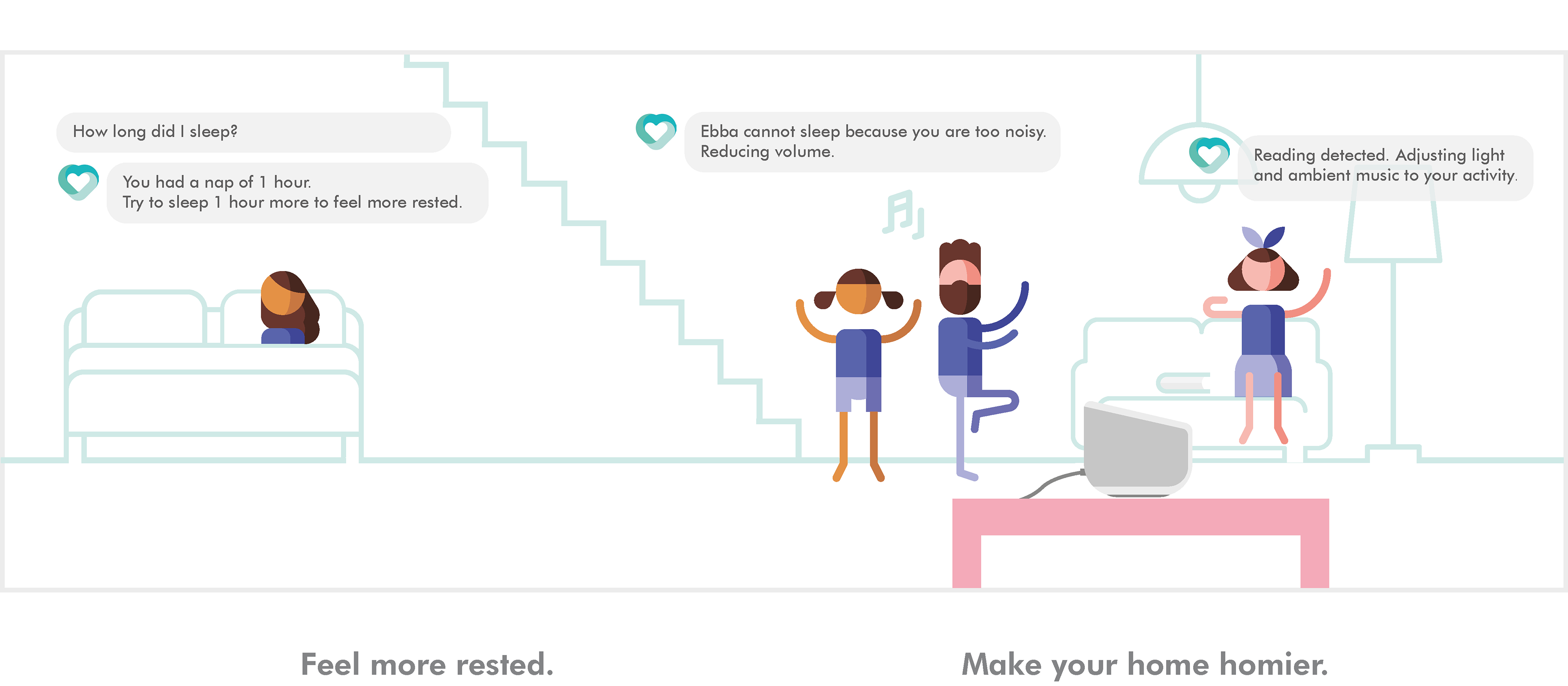
The health assistant, the center of the smart home
In this user journey scenario, we can see how users experience a health-focused, comfort-oriented, and well-being-based service in a non-intrusive manner.
In this user journey scenario, we can see how users experience a health-focused, comfort-oriented, and well-being-based service in a non-intrusive manner.
Functional analysis
Based on the findings of our market research, which indicate that touch screen and voice-controlled devices will continue to grow in popularity, we have identified two different functional analyses: one for a smart home hub that utilizes a touch screen, light, sound, and voice assistant for user interaction, and a second one that relies solely on a voice assistant, light, and sound.
System analysis map
To determine the use of the collected data in the services provided by the smart home system, I defined three different system maps: one that focuses on providing a physiological health service, another that focuses on health monitoring, and a third that provides a service related to environmental factors.
To determine the use of the collected data in the services provided by the smart home system, I defined three different system maps: one that focuses on providing a physiological health service, another that focuses on health monitoring, and a third that provides a service related to environmental factors.
Moodboards
Although our product is a health product, we do not want users to perceive it as such, as it will take a prominent place at the center of the smart home. We do not want the product to feel like it belongs in a hospital, but at the same time, it is important that it conveys a sense of well-being without appearing to be an entertainment product. The following mood boards helped us navigate this conflict.
Although our product is a health product, we do not want users to perceive it as such, as it will take a prominent place at the center of the smart home. We do not want the product to feel like it belongs in a hospital, but at the same time, it is important that it conveys a sense of well-being without appearing to be an entertainment product. The following mood boards helped us navigate this conflict.
Presentation
The product was presented at Xjobbsmässan ‘19 (Jönköping University).
The product was presented at Xjobbsmässan ‘19 (Jönköping University).


